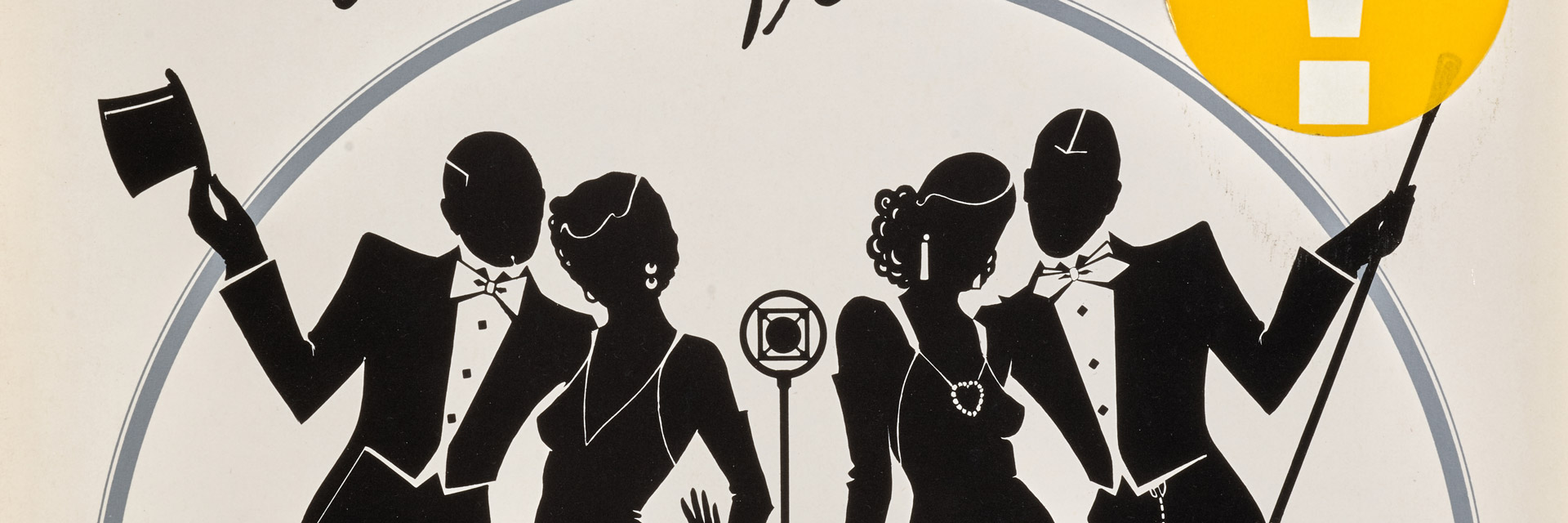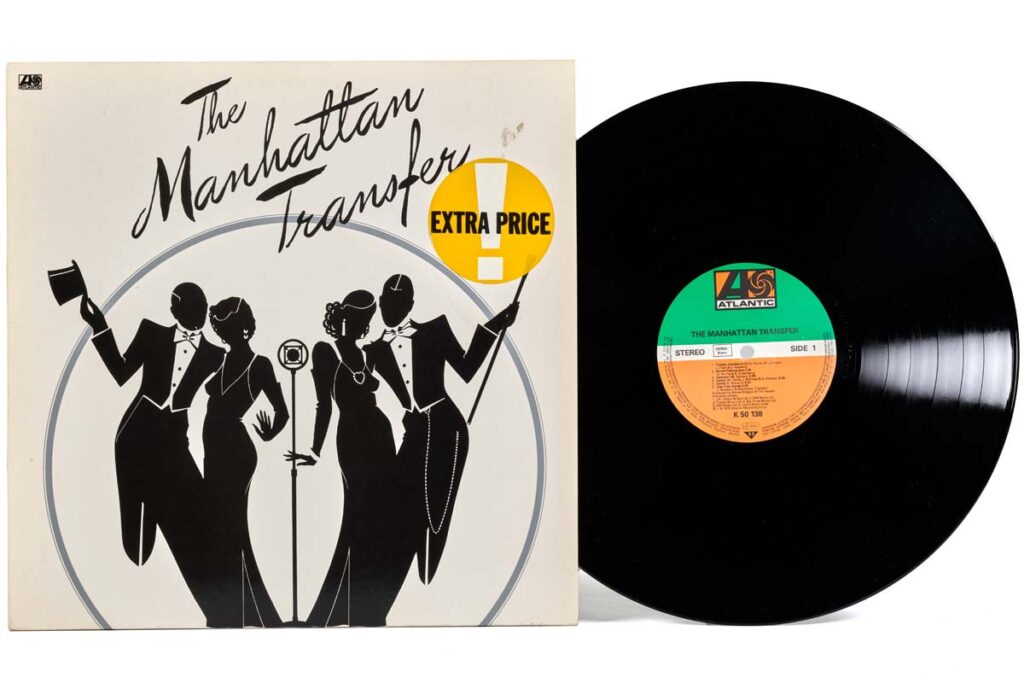The first attempt had fallen flat.
Back in 1969, Tim Hauser (1941–2014) had already led a five-member vocal group also called The Manhattan Transfer. But their debut album (Jukin’) got little attention, and Capitol Records soon dropped them. Hauser turned to driving a taxi in New York – a job where you meet all kinds of people. One of his passengers was singer Laurel Massé. Another asked for a ride to a party, where Hauser met Janis Siegel. The group was completed in 1972 with Alan Paul, who was then performing in Grease on Broadway.
For two years, the four worked their way through New York’s club scene. Record labels, however, weren’t interested. A vocal group that performed swing one night, rhythm & blues the next, and then rock’n’roll didn’t seem like a surefire hit.
“We didn’t want to be boxed into one style,” said Alan Paul. “We’re not a pop group, we’re not a jazz group. We’re a vocal group.”
It was reportedly singer Bette Midler who convinced Atlantic Records’ jazz producer Ahmet Ertegün to see the group live. He was instantly blown away by their energy.
The early 1970s weren’t just about pop art, hippies, and synthesizers – there was also a strong wave of nostalgia. Movies like Cabaret and The Sting, both set in the 1930s, were big hits. Ragtime was making a comeback. The Pasadena Roof Orchestra gained fame. Glam rock revived rock’n’roll sounds, while bands like Genesis and Queen incorporated music hall elements. Even avant-garde jazz musicians like Henry Threadgill and Anthony Braxton were playing tunes by Scott Joplin and Jelly Roll Morton.
So by 1975, The Manhattan Transfer somehow fit the era – as a kind of stylish retro act. Their shows featured frequent costume changes in nostalgic styles. Most of the material on their debut album came from 1940s swing (Glenn Miller, Jimmy Dorsey, Earl Hines) and 1950s rhythm & blues and doo-wop (The Ink Spots, The Cadillacs, The Avalons). All the songs were kept short – just about shellac-record length.
Yet Manhattan Transfer never saw themselves as mere nostalgists – they wanted to sing contemporary pop too. That’s why they included “Occapella”, a 1970s funk tune from New Orleans, and wrote “Clap Your Hands” themselves – in the trendy Philly soul style.
The Manhattan Transfer
Recorded: 1974
Published: April 2nd, 1975
Label: Atlantic
Produced by: Ahmet Ertegün & Tim Hauser
Tracklisting
A
- Tuxedo Junction 3:01
- Sweet Talking Guy 2:25
- Operator 3:09
- Candy 3:26
- Gloria 2:57
- Clap Your Hands 2:55
B
- That Cat Is High 2:53
- You Can Depend On Me 3:30
- Blue Champagne 2:21
- Java Jive 2:44
- Occapella 3:04
- Heart’s Desire 2:36
The Manhattan Transfer
Alan Paul – Vocals
Janis Siegel – Vocals
Laurel Massé – Vocals
Tim Hauser – Vocals
Accompaniment
Don Grolnick – Piano, Electric Piano, Clavinet
Richard Tee – Organ, Electric Piano
Ira Newborn – Guitar
Mike Rod, Michael Brecker, Zoot Sims – Saxophone
and others
&
Big band and strings
- #33 on the U.S. pop charts, #49 in the UK – where the album also earned a Gold Record. In the summer of 1975, The Manhattan Transfer were so popular that they got their own TV show on CBS – a one-hour program aired on four consecutive Sundays.
- The New York Times called The Manhattan Transfer “one of the slickest groups on today’s market” (May 1975).
- “Operator” was the lead single. It reached #22 in the U.S. and #26 in Canada. In this track, the group transforms into a gospel quartet, with Janis Siegel on lead vocals. The song pleads, “Give me Jesus on the line,” as the operator is asked to make a direct connection to heaven. Michael Brecker delivers a soulful tenor sax solo.
- The UK hit was “Tuxedo Junction”, which peaked at #24 on the British charts. It’s a lovingly slowed-down re-creation of the famous big band arrangement by Glenn Miller – this time with lyrics and ensemble vocals (“boo-bah, boo-bah”).
- Nearly every track on the album features the vocal quartet backed by a full big band lineup, including top jazz names like Randy Brecker, Garnett Brown, Jerry Dodgion, Jon Faddis, and David Sanborn.
- The musical director for the album was Ira Newborn, only 25 at the time, who also played jazz guitar on the record. He would go on to score music for over 20 films – including the slapstick Naked Gun series.
- Tim Hauser named his group after Manhattan Transfer, a 1925 novel by John Dos Passos – which itself was named after a New Jersey train station where passengers could transfer to New York City until 1937.
- One remake from a previous incarnation of the group is the laid-back “Java Jive”, originally made famous by The Ink Spots. On this track, The Manhattan Transfer are accompanied solely by Newborn on guitar.
- The jazziest number is “You Can Depend On Me” by Earl Hines. Siegel and Hauser even recreate historic jazz solos – with newly invented lyrics. This “vocalese” technique would become one of the group’s trademarks. Zoot Sims adds a virtuoso tenor sax improvisation.
- This was the group’s first album on Atlantic Records – ten more would follow by 1987. Four tracks from this debut made it onto their Best Of compilation (1981).


